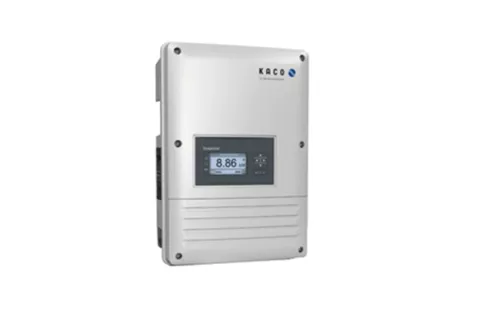Search
Search
1361 results were found.
During the past months, solar or photovoltaic panels have become a hot topic because the energy crisis has astronomically raised prices for electricity and gas . As a result, homeowners want to become less dependent from the electricity production. One of the most common solutions is to build a photovoltaic power plant on the roof of their house.
With self-produced electricity, you can save up to 60% on energy costs. In addition, this production is environmentally friendly and, in many countries, supported by governments as “green projects”. You can store such electricity either in water heating or accumulate it in batteries and then use this electricity in the evening.
How do photovoltaics work?
Solar or photovoltaic power plants use the photoelectric phenomenon when the action of light (photons) on various materials creates an electric current.
Silicon (lat. Silicium) is usually used in photovoltaic panels - the panel consists of many smaller semiconductor cells that are interconnected so that the panel provides the required power.
<<< Photoelectric effect on solar panels
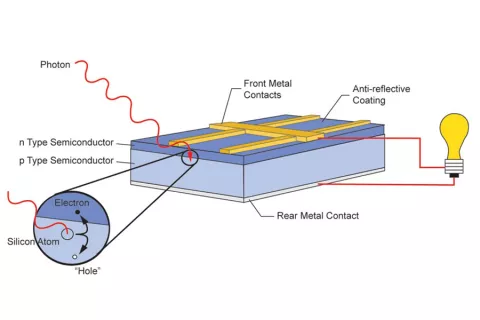
As soon as sunlight hits the photovoltaic panel, the panel creates a direct current of electricity, which we can then use. This is taken care of by other components of the solar power plant, such as an inverter. The inverter creates alternating current from direct current, the same as we have at home in the sockets. Thanks to the inverter the electricity from PV panels in the house flows everywhere where needed - it is the brain of the home solar plant.
Photovoltaic panels work best when they are exposed to bright sunlight, as perpendicular as possible. That’s why their optimal slope is very important - in our conditions it’s approx. 35˚ - 45˚. A solar power plant will produce electricity even if it’s cloudy because the photoelectric effect simply works in any light. But expect only a small part of full power in such conditions.
Main parts of the photovoltaic system
That is in a simple way the principle of converting solar radiation into electrical energy. Now we will introduce the individual parts of a photovoltaic power plant.
- Photovoltaic panels
- Direct current
- Inverter
- Alternating current
- TV
- Water heater/boiler
- Battery
- Washing machine
- Dryer
- Elektromobile charger
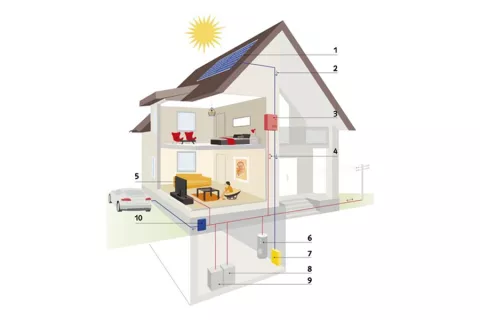
Types of solar panels
There are 3 types of photovoltaic panels available on the market:
- monocrystalline,
- polycrystalline,
- and amorphous (also referred to as thin-film).
Monocrystalline photovoltaic panels are considered the most efficient, reaching an efficiency of up to 21%. In the case of polycrystalline panels, it is at an efficiency level of approx. 19%, and for amorphous panels it is only around 10%.
<<< Solar monocrystalline panels
The big advantage of monocrystalline panels compared to polycrystalline panels is that, thanks to their high efficiency and ability to achieve optimal performance even in low sunlight, they do not take too much space on the roof as polycrystalline panels. The lifetime of monocrystalline panels is guaranteed by manufacturers for at least 25 years, they require minimal maintenance during the year and the decrease in their performance over time is less than 0.5% per year.
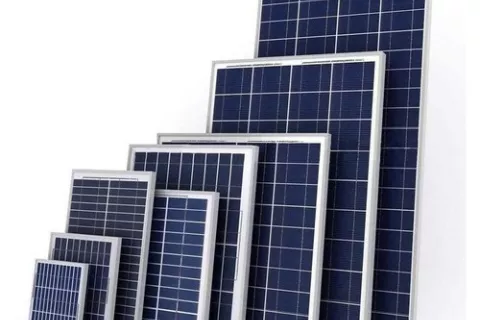

Renovating your old roof or building a new roof in combination with solar panels? IKO roof shingles can easily be combined with solar panels. Choose the right fit for your home thanks to our A4 samples!
Performance optimizers
This kind of optimizer is a very useful accessory for every photovoltaic panel. Thanks to them, the photovoltaic power plant can produce up to 25% more energy and at the same time help to maximize the performance of each panel.
The main difference between photovoltaics with optimizers and a solution without optimizers is that if the performance of one panel is reduced, for example due to fallen leaves or snow, with optimizers, the remaining panels work at 100%. In a photovoltaic power plant without power optimizers, not only the power of the shaded panel will decrease, but also the power of the other panels in this string (roof side).
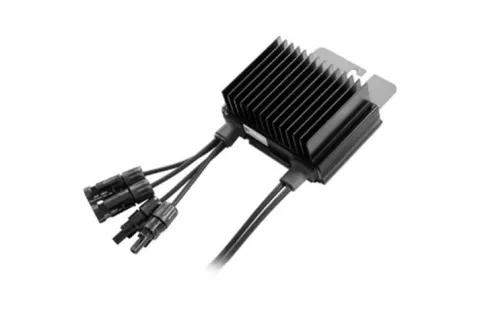
Performance of panels without optimizers
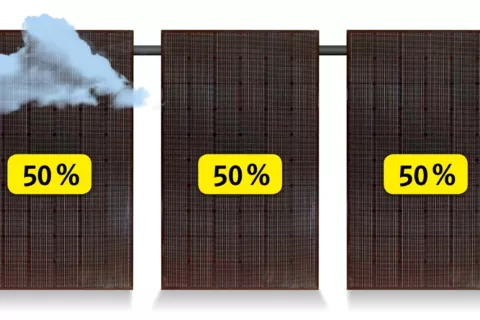
Performance of panels with optimizers
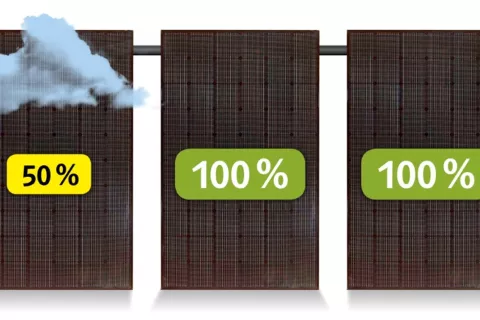
Inverter
The main function of an inverter in the photovoltaic system is to change direct current into alternating current, which can then be used for household needs. Every inverter has a digital menu display where you can control actual electricity production with all necessary data. Many manufactures also provide monitoring software together with the inverter. This monitoring is then available in a mobile or computer application, where all photovoltaic panels and their individual performance are graphically represented. The application automatically sends notifications to the customer and provides practical information about the weather or positive effects of the photovoltaic power plant on the environment.
